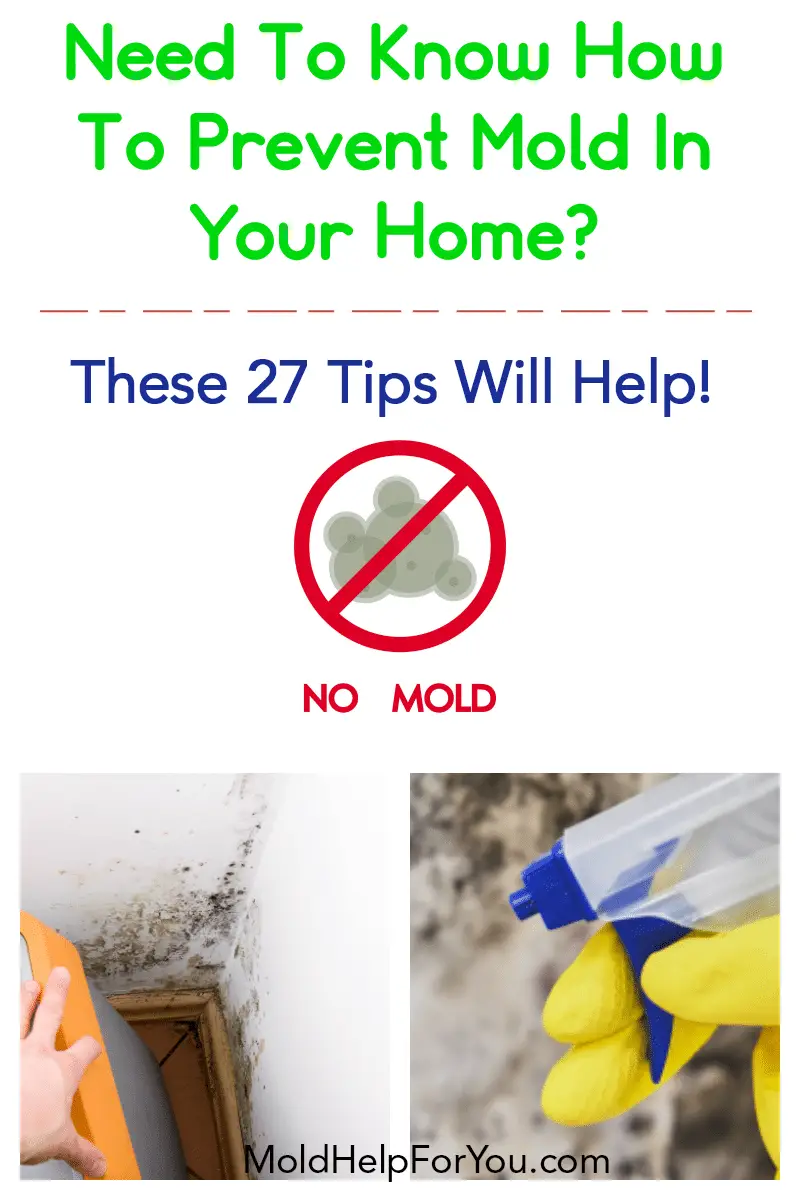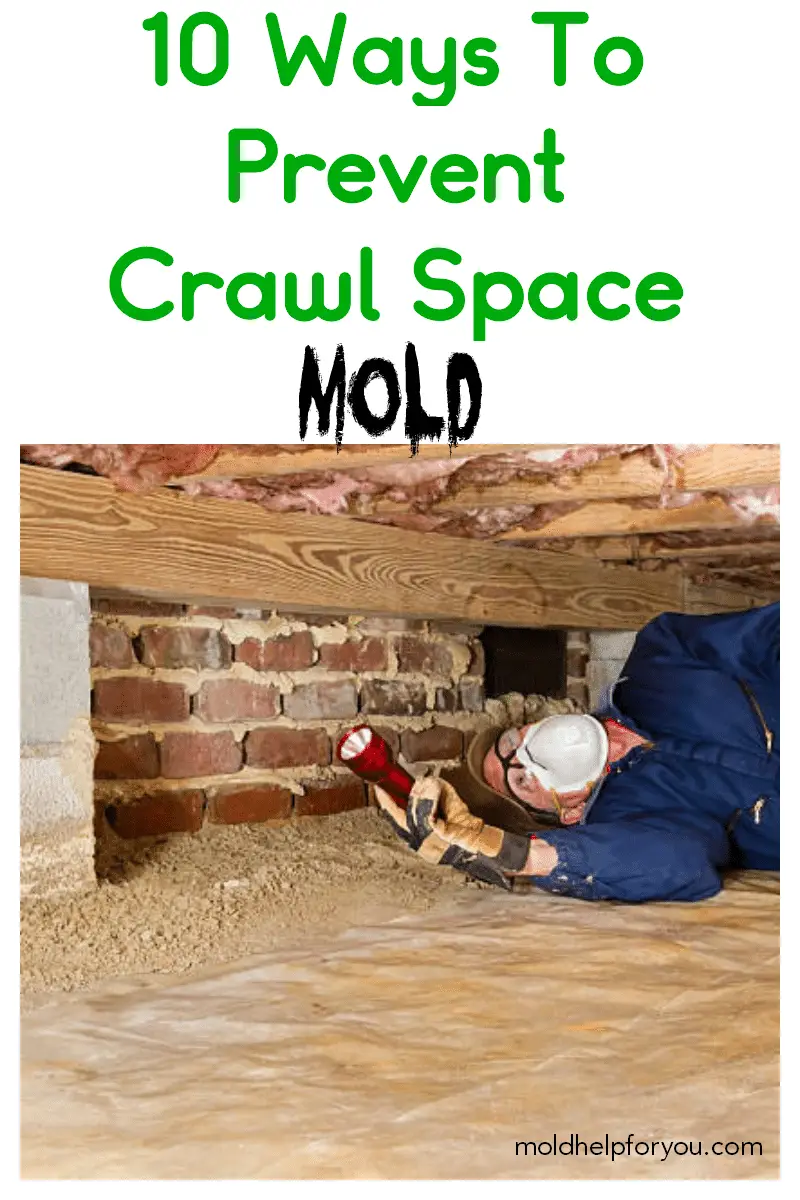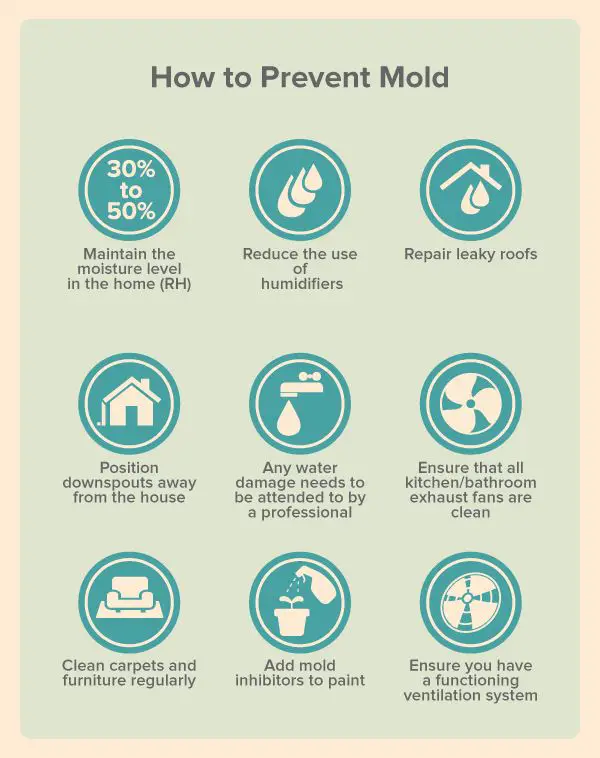We Have A Problem With A Room In Our Basement It Is Uninsulated And Has A Moldy Smell The Odor Is Worse In The Winter Months My Son Likes To Sleep In The Room
Youll want to focus on two items increasing the temperature and the air flow. Addressing these issues will lower the humidity and the mold growth/musty odor.
Purchase a relative humidity gauge and install it in the basement. Your goal is to keep the RH below 50%. Increase the heat as necessary to lower the RH until youve reached 50%.
The easiest way to increase the ventilation is to run a bathroom exhaust fan. If theres an existing fan in the basement, run it at least 12 hours per day in the winter months.
Its also important to verify whether the basement is suffering from vapor emissions through the concrete slab. This occurs when water vapor moves up through the slab and into the room above. If the basement is carpeted, the moisture can become trapped and lead to mold growth. See our page on basement mold for more info.
I Found A Hard Black Coating Under Painted Concrete In My Basement If After Cleaning Can I Paint Over It It Did Not All Scrub Up Does Mold Get Imbedded In The Cement
Based on your description, this does not sound like mold. On concrete, mold will appear in either a fuzzy format or a stain like appearance. It would not feel like a hard coating. In either scenario, it is fine to paint the concrete after youve thoroughly scrubbed and cleaned the area. Anything remaining is simply the pigment from the prior mold growth, which cannot regrow.
Keep Healthy Humidity Levels
Mold and mildew thrive in a humid environment, so it is important to keep your humidity levels down. In areas that are prone to excessive moisture, make sure you ventilate. When using the kitchen, bathroom or basement, turn on the vent fans. If there are no vent fans in these rooms, have them repaired or installed by an electrician. Also, consider installing whole-home humidification or plug-in dehumidifiers.
Attics fans can also help manage moisture and provide ventilation in the home. Ask your HVAC professional if attic fans are right for your home.
You can also take measures to control the humidity levels in your home with your HVAC system, which may or may not have a humidification system built in. Regardless, running the air conditioner will help dry and circulate the air. A closed up home in the summer without air conditioning and little air movement will create the humid, warm and dark conditions necessary for mold growth.
Don’t Miss: Stair Nose Molding For Vinyl Plank Flooring
How To Remove Mold From Wood Yourself
You can remove mold from wood in several different ways the method you use all depends on how bad the mold has gotten. If the wood is untreated and unsealed, you may have to sand and scrub the mold away, as it can be very porous. If the mold has not penetrated the surface as yet, you might be lucky and can perhaps remove it with some white vinegar in a spray bottle. What follows are guidelines to clean mold from wood using natural chemicals.
What Causes Mold On Bread

To put it simply, mold starts to develop on bread when the mold spores land on it and the conditions are right for it to grow.
Mold, a type of fungus, is caused by five factors: water, temperature, light, nutrients, and a mildly acidic PH. Of these factors, water is the primary cause of mold. Without moisture, no form of mold will be able to grow.
So, the number one thing that causes mold on your bread is simply humidity. Too much moisture in the air around the bread and youre creating an ideal environment for the mold spores to mature.
Don’t Miss: Cleaning Mold In Basements
How Do You Prevent Mold In Buildings
The key to preventing mold is simple: Moisture control.
Simply so, how do you prevent mold in a warehouse?
Here are some things you can do in order to ensure a moisture-resistant and mold-free storage unit.
Secondly, what causes mold in buildings? Causes and growing conditions. Mold is found everywhere and can grow on almost any substance when moisture is present. They reproduce by spores, which are carried by air currents. Flooding, leaky roofs, building-maintenance or indoor-plumbing problems can lead to interior mold growth.
Keeping this in consideration, how do you get rid of mold in a building?
To remove mold from surfaces, use a 1:1 to 1:3 bleach-and-water solution and a good scrub brush. Bleach is the old standby, but it’s not tolerated by everyone.
What can I spray to prevent mold?
Tips To Prevent Mold And Mildew Inyour Home
1. Inspect Your Home Monthly
Staying vigilant of any leaks around the house, especially in bathroom faucets, showers and toilets is key. Also, check your baseboards several times per year. If you see any discoloration, you know you have a water intrusion occurring.
Other signs of a water intrusion include general dampness , odd odors, discoloration, peeling paint, sudden onset of condensation, and compacted insulation.
2. Prevent and Fix Leaks
Prevent leaks by performing basic home maintenance on a regular basis. Make sure that your water pressure isnt too high as this can cause pipes and connections to burst. It also shortens the life of your pipes. Insulate or wrap your pipes during cold weather.
Use leak alarmsto alert you to any leaks. Fix leaks immediately and correctly using a licensedplumber.
3. Dry Wet Areas Immediately To Prevent Mold and Mildew
Cleaning up standing water or moisture should be obvious but you would be surprised at how many people do not do this. Most, but not all molds need 24-48 hours of moisture to begin to grow. Therefore if a suitable material in your home is wet for more than 24 hours then you run the risk of mold starting to grow. As soon as you see any standing water, clean it up and dry the area out. This includes minor amounts of water like a wet shower. Dry the shower after each use . This also includes major amounts of water from a broken pipe or a flood. Of course, standing water includes everything in between.
22. Eliminate Clutter
Recommended Reading: Mold Spores On Bathroom Ceiling
Get Rid Of Excess Water
As soon as you are done showering, get rid of as much water as possible so that it doesnt have time to evaporate and cause mold. A simple squeegee should do the trick as well as a quick wipe of the tub or sink. You can use a washcloth to get to the tile grout and corners where mold has a tendency to start growing.
Thoroughly clean your shower, tub, sink and toilet once a week to ensure no excess water has piled up. You can use various commercial cleaners and supplies such as scrub brushes and washcloths to clean your bathroom and prevent mold from invading it.
If You Use Bleach To Clean Up Mold
- Never mix bleach with ammonia or other household cleaners. Mixing bleach with ammonia or other cleaning products will produce a poisonous gas.
- Always follow the manufacturers instructions when you use bleach or any other cleaning product.
- Open windows and doors to provide fresh air.
- Wear rubber boots, rubber gloves, and goggles during cleanup of affected areas.
- If you need to clean more than 10 square feet, check the U.S. Environmental Protection Agency guide titled Mold Remediation in Schools and Commercial Buildings, which gives advice on all building types. You can get it by going to the EPA web site at .
Don’t Miss: Black Mold Ac Vent
How Do You Prevent Mold Growth
Mold can present a serious health issue and it can also eat away at building materials, insulation and support structures. Areas in the home where mold tends to grow include the basement, bathrooms, walls, ceiling corners, the attic, crawlspaces and on windowsills. Mold grows in areas with a lot of moisture. This includes leaks in roofs, windows, or pipes, or where there has been flooding. Its important to note that mold grows well on paper products, cardboard, ceiling tiles, and wood products. Mold can also grow in dust, paints, wallpaper, insulation, drywall, carpet, fabric, and upholstery. If you live somewhere humid, the garage can also be place for mold to thrive. When you do your seasonal maintenance make sure to check these areas for mold. So how do you prevent mold growth?
Mold growing in your home indicates that there is a problem with water or moisture. This is the first problem to address. Its all about ventilation, taking care of your roof and inspecting your plumbing.
What Kills Mold Instantly
In such cases, a solution of diluted bleach provides the fastest way to kill mold on walls or flooring. Prepare the solution by adding one cup of bleach into a bucket that contains about a gallon of warm water. Then proceed to scrub the mold vigorously with a stiff-bristled brush youve dipped in the bleach solution.
Don’t Miss: Mould On Leather
Cleaning Mold From The Toilet Tank
Pour distilled white vinegar into the tank and allow it to sit for about 120 minutes.
Flush the toilet a few times.
If you still see mold, you will need to turn off the supply valve and drain the toilet tank.
Then use a toilet brush or similar non-abrasive material and scrub the remaining mold spots.
Turn the water back on and flush the toilet twice.
Add another cup of vinegar to the toilet tank and let sit for 60 minutes.
Flush the toilet twice.
How Do I Know If My Cough Is From Mold

Coughing. Another one of the most immediate symptoms of a mold allergy is a dry and scratchy throat, prompting a nagging cough. In some cases, mold can cause heavier coughs as well. Mucus and histamine production can lead to persistent coughing as your body tries to clear the throat of mucus buildup.
You May Like: How Do You Remove Mildew From Leather
Make Sure Your Storage Room Is Dry
- Most homeowners have a room where they store materials such as books, clothes, camping gear, and other occasional use items.
- It is important that you check the humidity of your storage room and make sure that there is no excess moisture because most of the materials you are storing are ample sources of food for mold.
- Ideally, use your garage or a well built shed that prevents moisture intrusion, or a dry storage unit and not the inside of your home.
- Make sure there is air circulating in the storage area as well.
Shut Windows And Doors When Ac Is On
When you open windows and doors, you let air conditioning escape, waste money, and invite humid air into your cooler home. This causes condensation, which mold loves. So keep doors and windows shut when the AC is humming.
Also, maintain your home at around 80 degrees when youre on vacation or at work. Too often, we bump the thermostat up to 85 degrees, or turn off the AC when were away. This raises temperature and humidity, which creates the ideal home for mold.
Think twice before you write or receive a home love letter.
Don’t Miss: How To Get Mold Out Of Bathroom Ceiling
How To Prevent Mold In The House
As previously mentioned, you cannot escape mold as it is a necessary part of the ecosystem. As a matter of fact, fungi make up 25% of the Earths biomass.
Although outdoor mold is not so harmful and it will not impact the quality of your life, indoor mold raises your risk of health problems. It is very important to understand that mold is allergenic, no matter which type it is. Luckily for us, not all types of mold are toxic. In order to keep mold from growing indoors, it is good to go back to how mold grows in the first place.
To start its life cycle, mold requires the following three things:
The only effective strategy to prevent mold is to prevent moisture. Other measures you can take to ensure mold doesnt invade your home include regular air quality tests and professional monitoring of indoor environment.
Symptoms Persist As Long As Theres Exposure To Mold
If youre worried about the persistence of mold symptoms, you may want to have your home inspected for mold growth. This is because the underlying cause of such symptoms hasnt been resolved.
So, with continuous exposure, symptoms remain and could even worsen. Youll need to seek medical attention in addition to a home inspection.
Don’t Miss: Bathroom Ceiling Mold
Tips To Prevent Mold Growth
Equip Your Home With Mold
Building a new home or renovating an old one? Use mold-resistant products like mold-resistant drywall or mold-resistant Sheetrock, and mold inhibitors for paints. Traditional drywall is composed of a gypsum plaster core pressed between plies of paper. Mold-resistant drywall is paperless the gypsum core is covered in fiberglass, making the surface highly water-resistant. Moisture-resistant drywall is especially valuable in areas prone to wetness, such as bathrooms, laundry rooms, basements, and kitchens. Not only is traditional drywall more susceptible to mold than the paperless kind, but it is also difficult to rid of mold, and removal and replacement can be expensive. Mold-resistant gypsum board is also available the core of the drywall is developed in such a way to prevent moisture absorption, and thus prevent mold growth.
You May Like: Mould On Bathroom Ceiling
Dry Wet Areas Immediately
Treehugger / Christian Yonkers
Mold can’t grow without moisture, so tackle wet areas right away. Seepage into the basement after a heavy rainfall, accumulation from a leaky pipe, even a spill on the carpet should be dried within 24 to 48 hours. If you’ve experienced a flood, remove water-damaged carpets, bedding, and furniture if they can’t be completely dried. Even everyday occurrences need attention: don’t leave wet items lying around the house, and make sure to dry the floor and walls after a shower. Don’t leave wet clothes in the washing machine, where mold can spread quickly. Hang them to dry preferably outside or in areas with good air circulation.
There Has Been A Wet Smell In Our Newly Purchased Home Since We Got Here The Previous Owners Did Not Heat The Home In The Winter Months And There Is Very Poor Ventilation In The Basement We Removed Some Gyproc Todaydoes It Look Like We Will Have To Remove It All

Yes, the sheet rock should be removed. This is necessary not only to clean up the existing mold, but to implement the prevention measures.
First, you need to identify the source of the moisture. Three possibilities exist. 1.) Condensation from the warm interior air hitting the cold concrete wall. This typically does not happen behind a well sealed wall , but its possible.
2.) Vapor emissions through the concrete. This occurs when moisture moves through the concrete in vapor form, creating high humidity and saturation on the surface. In an uncovered wall, the water would simply evaporate into the air without causing an issue. The installation of the sheet rock traps the moisture, leading to mold growth. There are two solutions either keep the concrete exposed or install dimple board with a interior footing drain.
3.) Liquid water intrusion. Its possible youre having liquid water enter through the cold joint at the bottom of the wall. If this is the case, youll see more damage at the bottom plate/framing than higher up the studs. In most cases, the solution is an interior footing drain.
Also Check: How To Kill Mold On Bathroom Ceiling
How Do Molds Get In The Indoor Environment And How Do They Grow
Mold is found both indoors and outdoors. Mold can enter your home through open doorways, windows, vents, and heating and air conditioning systems. Mold in the air outside can also attach itself to clothing, shoes, and pets can and be carried indoors. When mold spores drop on places where there is excessive moisture, such as where leakage may have occurred in roofs, pipes, walls, plant pots, or where there has been flooding, they will grow. Many building materials provide suitable nutrients that encourage mold to grow. Wet cellulose materials, including paper and paper products, cardboard, ceiling tiles, wood, and wood products, are particularly conducive for the growth of some molds. Other materials such as dust, paints, wallpaper, insulation materials, drywall, carpet, fabric, and upholstery, commonly support mold growth.
